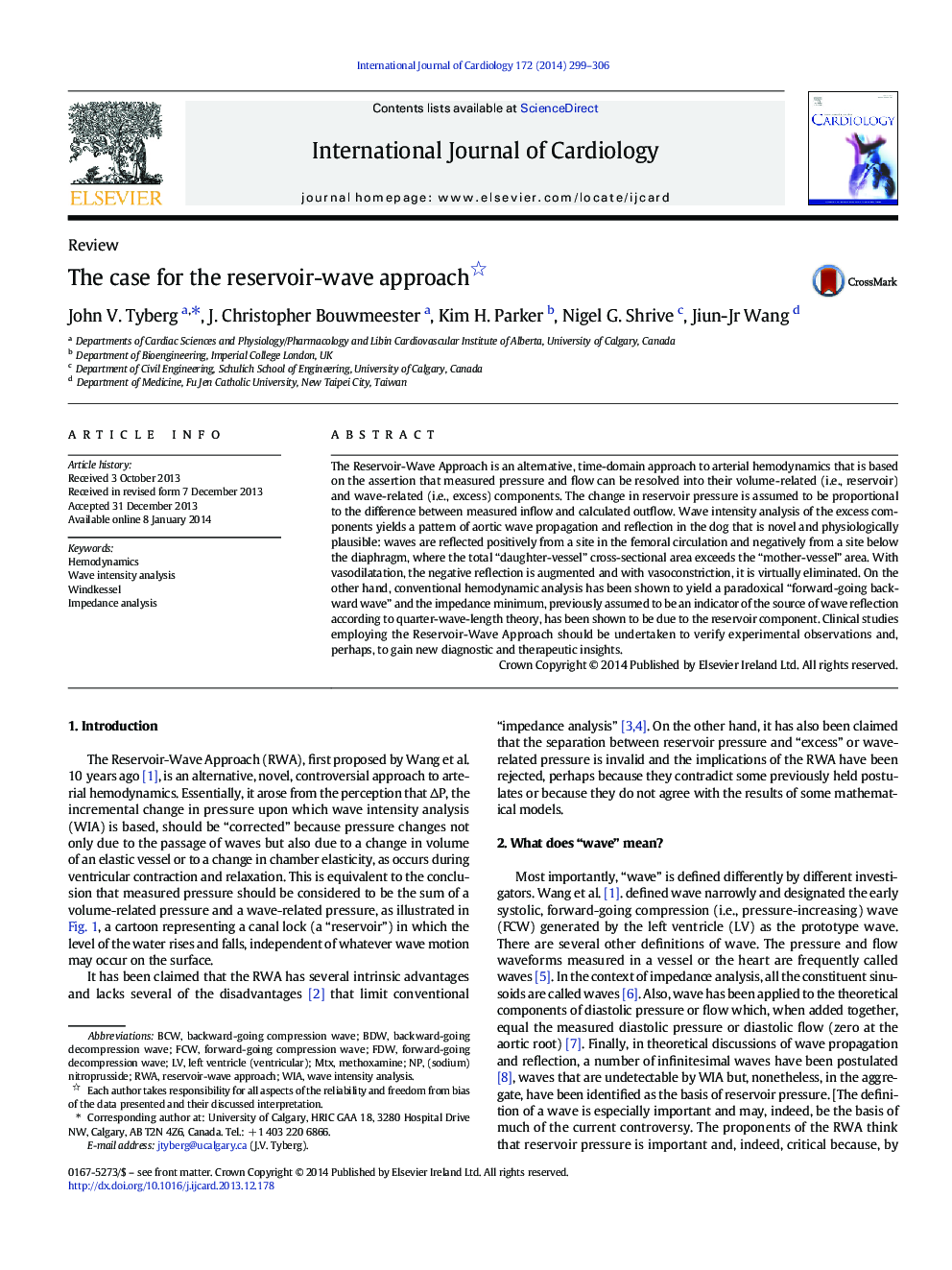| کد مقاله | کد نشریه | سال انتشار | مقاله انگلیسی | نسخه تمام متن |
|---|---|---|---|---|
| 5972006 | 1576191 | 2014 | 8 صفحه PDF | دانلود رایگان |
The Reservoir-Wave Approach is an alternative, time-domain approach to arterial hemodynamics that is based on the assertion that measured pressure and flow can be resolved into their volume-related (i.e., reservoir) and wave-related (i.e., excess) components. The change in reservoir pressure is assumed to be proportional to the difference between measured inflow and calculated outflow. Wave intensity analysis of the excess components yields a pattern of aortic wave propagation and reflection in the dog that is novel and physiologically plausible: waves are reflected positively from a site in the femoral circulation and negatively from a site below the diaphragm, where the total “daughter-vessel” cross-sectional area exceeds the “mother-vessel” area. With vasodilatation, the negative reflection is augmented and with vasoconstriction, it is virtually eliminated. On the other hand, conventional hemodynamic analysis has been shown to yield a paradoxical “forward-going backward wave” and the impedance minimum, previously assumed to be an indicator of the source of wave reflection according to quarter-wave-length theory, has been shown to be due to the reservoir component. Clinical studies employing the Reservoir-Wave Approach should be undertaken to verify experimental observations and, perhaps, to gain new diagnostic and therapeutic insights.
Journal: International Journal of Cardiology - Volume 172, Issue 2, 15 March 2014, Pages 299-306
